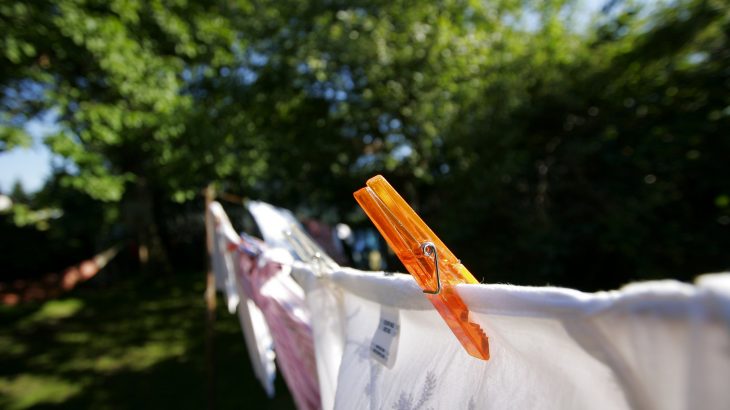The controversial textile discounter Primark opens a new branch in Wuppertal, no more than two hundred metres from the Wuppertal Institute. A good opportunity to rethink one’s own clothing consumption and the way one deals with the wardrobe’s interior. Our pioneer households did this in the experimental phase of the SLA project and thus reduced their material consumption and CO2 emissions.
Perhaps there is something for you?
- Repair good products (savings for pioneer households of up to 46 kg CO2 equivalents per capita and year)
- KBuy recycled products (by switching to 100 percent used products, pioneer households save up to 106 kg CO2 equivalents per capita per year)
- KonMari your home (savings for pioneer households of up to 84 kg CO2 equivalents per capita and year)
- Use environmentally friendly detergent (savings for pioneer households of up to 13 kg CO2 equivalents per capita and year)
- Wash and clean laundry and dishes at lower temperatures (e.g. 40°C) (None of the pioneer households tested this measure during the experimental phase, but it has already been planned for the future. The predicted savings are up to 45 kg CO2 equivalents per year).
- Wash laundry less frequently (savings of up to 4 kg CO2 equivalents per year)
- Wash full loads of laundry (savings of up to 12 kg CO2 equivalents per year)
Background
Human tragedies
At the latest since the Rana Plaza textile factory in Bangladesh collapsed in 2015, the fashion label Primark has been criticised for its working conditions. The tragedy killed 1,136 people who sewed clothes for fashion labels such as Benetton, Mango, C&A, KiK, Adler und eben auch Primark genäht haben. According to Primark, the company is now concerned about the safety and health of its factory workers. But according to a recent survey of 76 Sri Lankan workers who sew for Primark and C&A, the conditions are still appalling. Other brands, such as Abercrombie & Fitch, American Eagle, Benetton, Esprit, GAP, H&M, Hugo Boss, KiK oder Levi’s, are also repeatedly criticised for producing under inhumane conditions.
Big environmental problem
At Primark, but also at other textile discounters, you can get very cheap clothes. This tempts you to buy. In 2018, Germans bought clothing for a total of around 64.9 billion Euros. That makes almost 800 Euros per person. From an ecological point of view, such mass consumption is tragic: a pair of jeans needs more than 10,000 litres to be manufactured, which can be used to fill 50 bathtubs. A long-sleeved white cotton T-shirt produces around eleven kilograms of CO2 in the course of its life, which is equivalent to driving an average car for about 55 kilometres. Large quantities of pesticides and insecticides are used in cotton cultivation, and microplastic is flushed into rivers and oceans when synthetic fibers are washed. In short, the textile industry causes considerable environmental damage. Crazy when you consider that every fifth piece of clothing is almost never worn.
* Photo: Thinkstock


